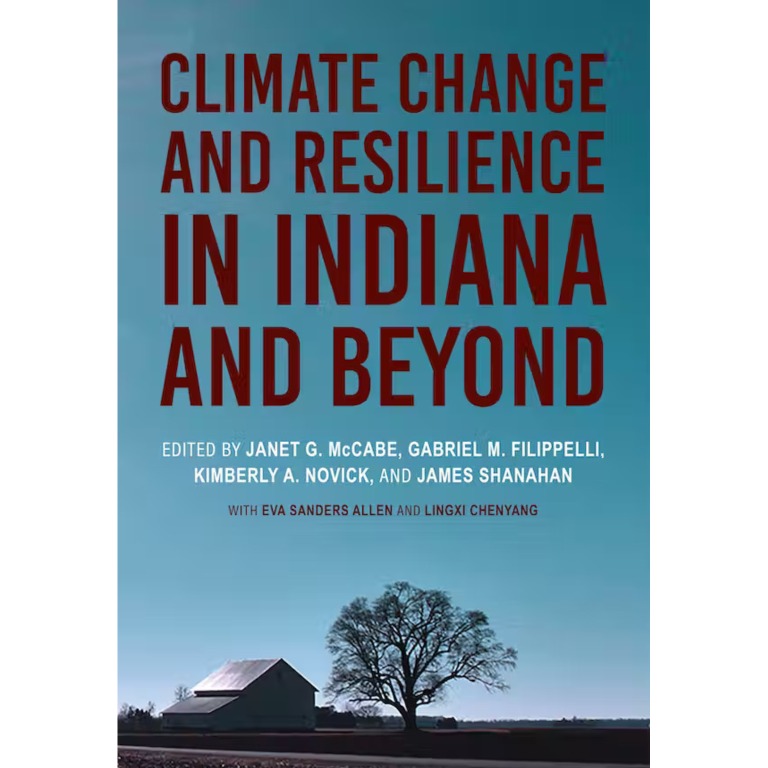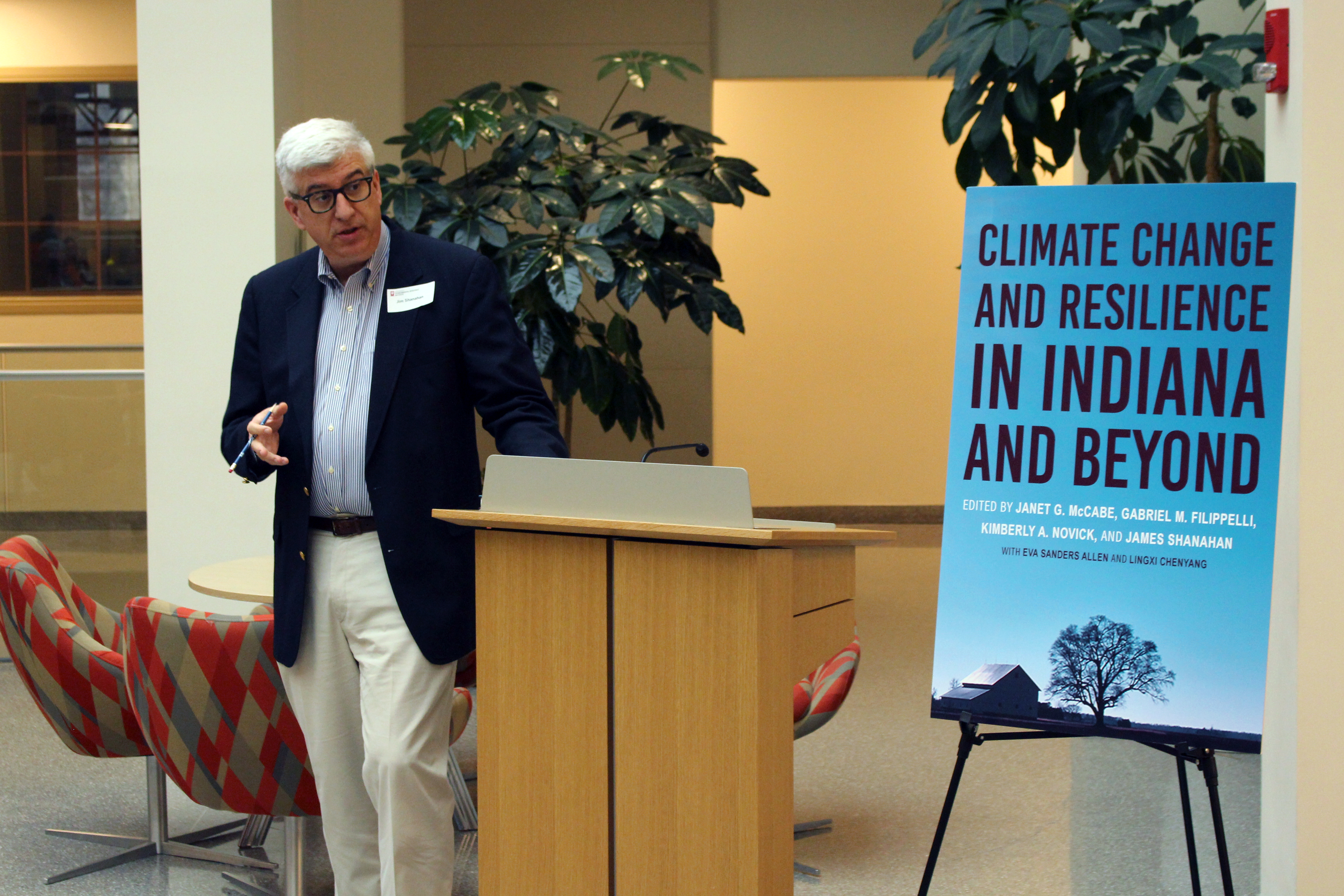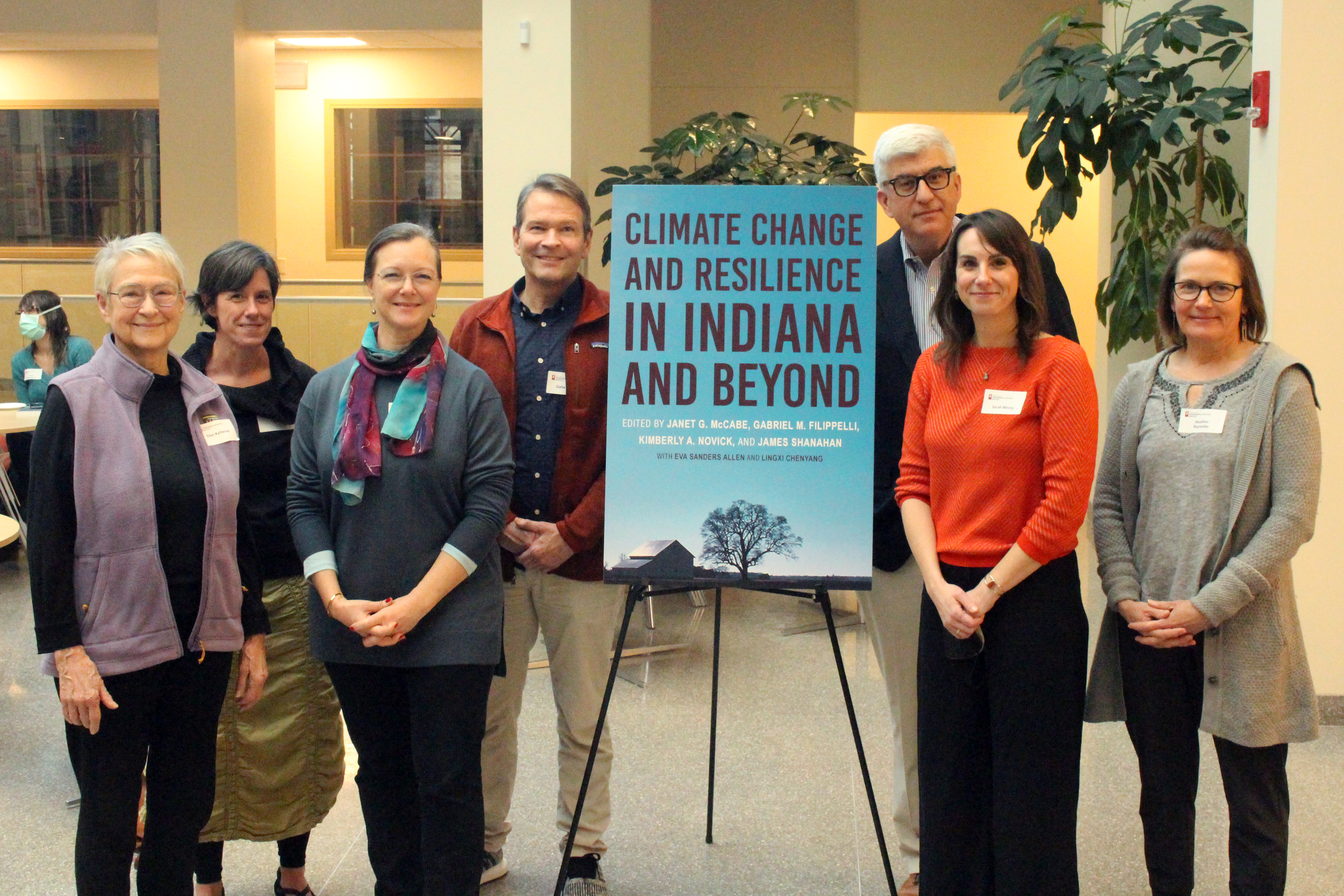As Indiana communities, businesses, and residents increasingly recognize the threat posed by climate change to Hoosiers’ health and livelihood, Indiana University Press and the Environmental Resilience Institute are teaming up on a new book series focused on environmental change—its challenges as well as solutions.
James Shanahan, a professor in The Media School at IU and former ERI associate director, announced the collaboration during a Jan. 18 event at IU Bloomington celebrating the publication of Climate Change and Resilience in Indiana and Beyond (IU Press), a book detailing how the Hoosier State can navigate the stresses posed by environmental change. The volume, released in November 2022, served as inspiration for the new book series.
“Environmental resilience is a theme that’s becoming increasingly important across all dimensions of life,” Shanahan said. “As with the first book, IU Press and ERI hope to make contributions to our home region—Indiana and the Midwest – with relevance far beyond as well.”
Unlike the first book in the series, which includes contributions from more than 40 IU researchers on a range of environmental topics, future installments will likely focus on a single topic related to the environment, climate, or resilience. Potential topics include the Midwest’s climate future, resilience and agriculture, or environmental justice in the Midwest. Shanahan and ERI Executive Director Gabriel Filippelli will serve as co-editors of the series.
“Given the growing impact of climate change, a book series that showcases how real people are responding to it is timely and essential,” said IU Press Director Gary Dunham.
Since its creation in 2017, ERI has served as a hub for researchers, students, and leaders from across Indiana and the Midwest to collaborate on environmental change and work to create a more sustainable and equitable future. The recent book is one outcome of that activity, Filippelli said at the Jan. 18 event.
“A book on Indiana and climate change was first proposed by former ERI Director Janet McCabe as a capstone project for the Prepared for Environmental Change Grand Challenge, which gave rise to ERI,” he said. “It encapsulates the institute’s mission of addressing environmental change in our state and includes chapters on the research, communication, and community work that is driving solutions. I like to think of this as the first chapter in the future of ERI.”
Research by Indiana scientists projects the Hoosier State’s average temperature will increase 6 to 10 degrees Fahrenheit by 2100, with more instances of heavy rainfall and extreme heat waves. These changes are already evident in Indiana and the Midwest and will only become more pronounced in the decades to come without action.
Fortunately, there’s a lot that people can do collectively to avoid the worst impacts of climate change and many are already acting, Filippelli said.
“What I see from talking to people of all ages and backgrounds is an interest in doing something—not just documenting the trainwreck but finding and implementing solutions,” he said.
About the Environmental Resilience Institute
Indiana University’s Environmental Resilience Institute brings together a broad coalition of government, business, nonprofit, and community leaders to help Indiana and the Midwest better prepare for the challenges of environmental change. By integrating research, education, and community, ERI is working to create a more sustainable, equitable, and prosperous future. Learn more at eri.iu.edu.





